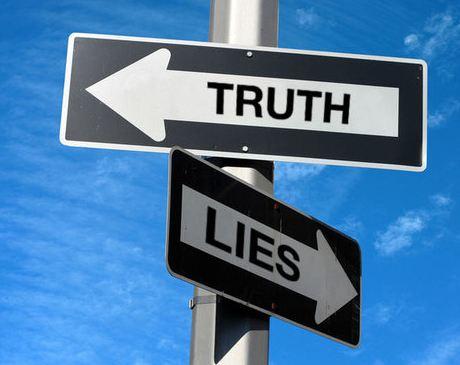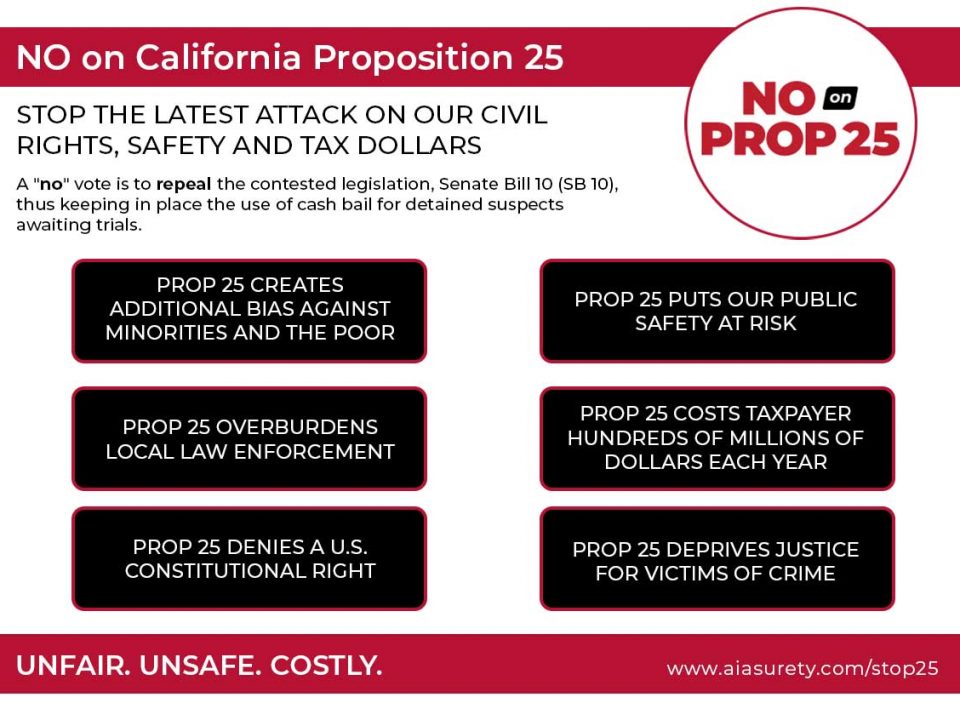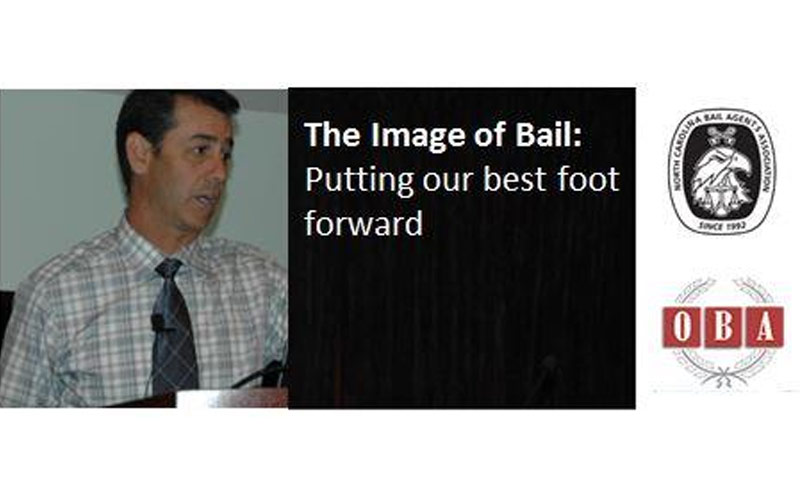- Need a bail bond?
- (800) 938-2245
- [email protected]
More of the Same: Pretrial Release Lies and Bail Bond Truths
THE NATION'S LARGEST BAIL BOND NETWORK
(800) 938-2245

FIND A LOCAL BAIL BOND AGENT NOW
The ExpertBail Network is comprised of the industry’s best, most experienced and most trusted bail bond agents.
- Nationwide bail bonds. Anywhere. Anytime.
- Largest network of local bail agents in every state bail can be written.
- Raising the standards in the bail industry.
- Fast and Reliable.
- Se Habla Español.

Infographics are great tools for disseminating information. Most of the time people use them to share facts and statistics so as to make them more digestible and understandable for readers. The Justice Policy Institute on the other hand, used its most recent infographic to spread more mistruths about the bail industry. Check out the response below from Dennis Barlett of the American Bail Coalition. Once you read this, you might never trust anything that comes from the Justice Policy Institute ever again.
JPI’s War On Bail: A Pneumopathology?
by Dennis Bartlett, Executive Director – The American Bail Coalition
“When the going gets weird, the weird turn pro.”
Hunter S.Thompson
Eric Voegelin credits the philosopher von Schelling with coining the term pneumopathology which is an abnormal spiritual virus in which the infected subject revolts against reality as it exists and purposefully omits an element of reality in order to facilitate his fantasy.
The so called pretrial justice bail reform axis manifests symptoms of this pathology. The bail reform movement with it theories and jargon has shaped the thinking of this marginalized community very often without their being aware of it. A bail reformer is defined as one or an organization such as the Justice Policy Institute, which proposes the elimination of financial methods of release for defendants pending trial. The Justice Policy Institute, after a brief spasm in September has reintroduced the issue by producing an eye catching infographic on the bail industry. Like JPI’s earlier three papers, this infographic exhibits an exorcism of facts and an abstinence from the truth which borders on the heroic. Below are a few comments illustrating these omissions by JPI. Most of it is old road kill which JPI has regurgitated. But there are some new issues which need a response. Take a look at their statements juxtaposed to the facts. Then you make the call.
“Past data has a lot of good in it, but it is the bad side that is bad.”
Yogi Berra
PJI Statement #1:
$3.1 Million in Lobbying – From 2002 to 2011 the bail industry influenced pretrial policy through at least $3.1 Million to state-level lawmakers
The Truth:
Where did JPI come up with 3.1 Million dollars over 10 years figure? Did they audit each state’s office of ethics compliance? For each year? How did they identify the players? Solid numbers? Or is JPI trying to make an ice cube from a puddle? That number seems way too high based on what we have seen in the industry. But even with that number, the impact and influence that JPI is insinuating that the bail industry has wielded and wields over legislators over the past decade is evanescent, that is, if you have any respect for the nature of causality. Break down the numbers a bit.
So assuming JPI is correct and the bail industry really spent $3.1 Million over a 10 year time period. That $3.1 Million translates to $310,000 per year. Since commercial bail is in 46 states, you have to divide that number by 46….. ($344,444/46) and that gives you $6,739.13 per state, per year for the bail industry to influence legislators and decision makers. (Remember also that a decade represents five election cycles with about a third of state level lawmakers turning over each election cycle).
Breaking that down even further to a monthly cost, are you looking at an on target carpet bombing lobbying effort that contributes only $561.59 per month per state to lobbying efforts? How influential is that?
Put that into context with some other industries and what they spend on lobbying efforts.
– Chiropractors spent 4.65 million between 2002 and 2011
– Funeral Directors spent 4.46 million between 2002 and 2011
– Dairy Farmers spent 8.14 million between 2002 and 2011
– Defense attorneys association spent $ 1.45 million between 2002 and 2012*
– All attorneys/law firms spent $2.03 billion between 2002 and 2012*
*On the federal level only.
JPI may have made the bail industry look bad, but for the wrong reason.
PJI Statement #2:
14 Billion in Bonds written by bail agents. With an average premium cost of 10%, the bail industry has generated $1.4 Billion in revenue from people who can’t afford it and who will never get that money back.
The Truth:
According to the Surety and Fidelity Association of America, which is tasked with gathering this data, the aggregate figure for 2011 penal liability for bail bonds was $13.6 billion. For people who work for a living, an omission of $400,000,000 is substantial. One could wager, that even PJI’s generous benefactor, George Soros, would concede that. Hence, the gross profit for the bail industry for 2011 is circa $1.36 Billion.
First, what these numbers do not tell you is that the role of commercial bail is to guarantee the obligation of the defendant to appear in court….once again “guarantee.” So that means that the bail industry guarantees annually $13.6 billion in obligations. In other words, bail agents insure $13.6 billion worth of liability in the criminal justice system with their own money.
Additionally, if one is to look at the $13.6 billion number for which commercial bail is accountable, let us look at the other release options and the amount in unsecured risk being assumed by those options.
So if commercial surety accounts for approximately 21% of all pretrial releases (BJS study)…and the value of those releases is $13.6 billion, that means that other forms of pretrial release account for approximately $45 billion worth of releases (79% of the total, which is $66 Billion worth of releases). Of those remaining releases, unsecured releases account for 54% which equals $35.6 Billion worth of releases. That $35.6 Billion are releases that are not secured…so if anyone doesn’t show up for court, no one has assumed the risk and no one pays. Assuming a FTA of 30%, which is the average unsecured release FTA rate, that amounts to $10.7 Billion in lost revenue to counties and states from defendants who fail to appear. Also when a defendant doesn’t appear on a financially secured bond, the bail agent pays the full amount to the court. That is the guarantee that bail provides…the defendant appears or we pay.
Focusing on the amount of money that bail agents make in the system is irrelevant and inconsequential once you really look at the numbers and then compare the bail industry to other industries. Based on $1.36 billion in revenue from bail bonds written annually, the average bail agent generates topline revenue of approximately $91,000 year (this is based on 15,000 bail agents in the US). Compare that to the average small business in the US which generates $1.5 million in topline revenue a year. So the bail industry averages only 6% of what the rest of the AVERAGE small business in America make. In addition, pared away from this figure are business costs, forfeitures, income taxes, business taxes, and premium taxes. (The bail industry paid $10 million in premium taxes in California alone in 2011).
Speaking of premium, bail premium is a fee for a service. Hence, it is not returned to the client. A bail bond is an insurance policy. It guarantees a defendant’s appearance in court. If you were to drive an entire year without an accident, would you call your car insurance company and ask them for your premium back? The bail industry is no different.
JPI Statement #3:
1992 – 2006 the average bail amounts doubled.
The Truth:
There are approximately three to four million bail bond transactions in the US annually. If the total penal liability written was $13.6 billion , the simple math shows that for, say, three million bonds, the price of an average bond in 2011 would be : $4533, and not the dopamine hyped up figure $55,500 as claimed by JPI.
Furthermore, a claim that something has doubled in price over a 15 year period omitting any context to other products during that same time period or explanation of financial conditions is questionable. Those being the case, compare the following: According to several sources including the US Census Data and the Bureau of Labor Statistics, below are some other prices that increased in the same 15 year period:
1992-2006 increases:
– Gas in 1992 was $1.13…in 2006 it was $3.04 – an increase of 170%
– Home pricesin 1992 averaged $144,500…in 2006 they averaged
$305,900 – an increase of 112%
– A Big Mac in 1992 was $2.00…in 2006 it was $3.19 – an increase
of 60%
– A Movie ticket in 1992 was $4.15…in 2006 it was $6.55 – an
increase of 58%
– A Postage stamp in 1992 was $0.29…in 2006 it was $0.39 – an
increase of 35%
JPI Statement #4:
8 out of 10 people in the US would have to pay a full year’s wages to make the average bail amount of $55,500.
The Truth:
False by virtue of the fact that he average bail about is less than ten times that figure. Based on the data provided in the previous section, we calculated a rough amount of approximately $4,500 for the average bond amount. Second, PJI omits that the defendant has to pay the full amount of the bond. Let’s assume that a bond set by the judge is $55,500. A consumer does not pay $55,500 to get the bail bond. Rather they pay a premium of 10% on average to the bondsman. That is $5,500…a number ten times less than the average annual wage of someone in the US. If you use the “real” numbers, an average bond of around $4,500, the cost to the consumer is only $450 to get a bail bond.
What JPI does not know or accept is that commercial bail is used for one reason and one reason only…it works, it has utility. That is why its use by judges has increased over the years. This increase is not due to some feline cunning power, intrigue, expensive lobbying efforts to bribe legislators and decision makers or continued attempts to steal from and mislead consumers. Bail works and people know it. Legislators know that commercial bail works. Law enforcement knows that commercial bail works. Judges know that commercial bail works. If JPI wants to flash some numbers, maybe they should try and show some of these:
– 90% of judges surveyed at the recent American Judges Association
Conference agreed that commercial bail plays an important role in
the criminal justice system (70% said a very important role)*
– 96% of judges surveyed felt confident that when a defendant was
released on a commercial bail bond, they would show up for court*
– 86% of judges said that bail agents were effective at getting
defendants back to court*
– 97% of sheriffs at the National Sheriffs’ Association Conference
said that bail agents play an important role in the criminal justice
system (74% said very important role)*
– The number one word used to describe bail agents by sheriffs
was “Professional” (60%)*
– When someone is released on a financially secured bond versus
a unsecured bond they are twice as likely to show up for court*
*Stats provided courtesy of ExpertBail Network Surveys.
“When we cross the Rubicon and leave truth on the far bank, we enter the realm of chaos.”
Dionysius Simplex

Bail Bonds, Rock Stars and Fake Kidnappings: It’s No Joke
December 17, 2012
Bail Bonds, Naked Pics and an Angry Scarlet Johansson
December 19, 2012More of the Same: Pretrial Release Lies and Bail Bond Truths

Infographics are great tools for disseminating information. Most of the time people use them to share facts and statistics so as to make them more digestible and understandable for readers. The Justice Policy Institute on the other hand, used its most recent infographic to spread more mistruths about the bail industry. Check out the response below from Dennis Barlett of the American Bail Coalition. Once you read this, you might never trust anything that comes from the Justice Policy Institute ever again.
JPI’s War On Bail: A Pneumopathology?
by Dennis Bartlett, Executive Director – The American Bail Coalition
“When the going gets weird, the weird turn pro.”
Hunter S.Thompson
Eric Voegelin credits the philosopher von Schelling with coining the term pneumopathology which is an abnormal spiritual virus in which the infected subject revolts against reality as it exists and purposefully omits an element of reality in order to facilitate his fantasy.
The so called pretrial justice bail reform axis manifests symptoms of this pathology. The bail reform movement with it theories and jargon has shaped the thinking of this marginalized community very often without their being aware of it. A bail reformer is defined as one or an organization such as the Justice Policy Institute, which proposes the elimination of financial methods of release for defendants pending trial. The Justice Policy Institute, after a brief spasm in September has reintroduced the issue by producing an eye catching infographic on the bail industry. Like JPI’s earlier three papers, this infographic exhibits an exorcism of facts and an abstinence from the truth which borders on the heroic. Below are a few comments illustrating these omissions by JPI. Most of it is old road kill which JPI has regurgitated. But there are some new issues which need a response. Take a look at their statements juxtaposed to the facts. Then you make the call.
“Past data has a lot of good in it, but it is the bad side that is bad.”
Yogi Berra
PJI Statement #1:
$3.1 Million in Lobbying – From 2002 to 2011 the bail industry influenced pretrial policy through at least $3.1 Million to state-level lawmakers
The Truth:
Where did JPI come up with 3.1 Million dollars over 10 years figure? Did they audit each state’s office of ethics compliance? For each year? How did they identify the players? Solid numbers? Or is JPI trying to make an ice cube from a puddle? That number seems way too high based on what we have seen in the industry. But even with that number, the impact and influence that JPI is insinuating that the bail industry has wielded and wields over legislators over the past decade is evanescent, that is, if you have any respect for the nature of causality. Break down the numbers a bit.
So assuming JPI is correct and the bail industry really spent $3.1 Million over a 10 year time period. That $3.1 Million translates to $310,000 per year. Since commercial bail is in 46 states, you have to divide that number by 46….. ($344,444/46) and that gives you $6,739.13 per state, per year for the bail industry to influence legislators and decision makers. (Remember also that a decade represents five election cycles with about a third of state level lawmakers turning over each election cycle).
Breaking that down even further to a monthly cost, are you looking at an on target carpet bombing lobbying effort that contributes only $561.59 per month per state to lobbying efforts? How influential is that?
Put that into context with some other industries and what they spend on lobbying efforts.
– Chiropractors spent 4.65 million between 2002 and 2011
– Funeral Directors spent 4.46 million between 2002 and 2011
– Dairy Farmers spent 8.14 million between 2002 and 2011
– Defense attorneys association spent $ 1.45 million between 2002 and 2012*
– All attorneys/law firms spent $2.03 billion between 2002 and 2012*
*On the federal level only.
JPI may have made the bail industry look bad, but for the wrong reason.
PJI Statement #2:
14 Billion in Bonds written by bail agents. With an average premium cost of 10%, the bail industry has generated $1.4 Billion in revenue from people who can’t afford it and who will never get that money back.
The Truth:
According to the Surety and Fidelity Association of America, which is tasked with gathering this data, the aggregate figure for 2011 penal liability for bail bonds was $13.6 billion. For people who work for a living, an omission of $400,000,000 is substantial. One could wager, that even PJI’s generous benefactor, George Soros, would concede that. Hence, the gross profit for the bail industry for 2011 is circa $1.36 Billion.
First, what these numbers do not tell you is that the role of commercial bail is to guarantee the obligation of the defendant to appear in court….once again “guarantee.” So that means that the bail industry guarantees annually $13.6 billion in obligations. In other words, bail agents insure $13.6 billion worth of liability in the criminal justice system with their own money.
Additionally, if one is to look at the $13.6 billion number for which commercial bail is accountable, let us look at the other release options and the amount in unsecured risk being assumed by those options.
So if commercial surety accounts for approximately 21% of all pretrial releases (BJS study)…and the value of those releases is $13.6 billion, that means that other forms of pretrial release account for approximately $45 billion worth of releases (79% of the total, which is $66 Billion worth of releases). Of those remaining releases, unsecured releases account for 54% which equals $35.6 Billion worth of releases. That $35.6 Billion are releases that are not secured…so if anyone doesn’t show up for court, no one has assumed the risk and no one pays. Assuming a FTA of 30%, which is the average unsecured release FTA rate, that amounts to $10.7 Billion in lost revenue to counties and states from defendants who fail to appear. Also when a defendant doesn’t appear on a financially secured bond, the bail agent pays the full amount to the court. That is the guarantee that bail provides…the defendant appears or we pay.
Focusing on the amount of money that bail agents make in the system is irrelevant and inconsequential once you really look at the numbers and then compare the bail industry to other industries. Based on $1.36 billion in revenue from bail bonds written annually, the average bail agent generates topline revenue of approximately $91,000 year (this is based on 15,000 bail agents in the US). Compare that to the average small business in the US which generates $1.5 million in topline revenue a year. So the bail industry averages only 6% of what the rest of the AVERAGE small business in America make. In addition, pared away from this figure are business costs, forfeitures, income taxes, business taxes, and premium taxes. (The bail industry paid $10 million in premium taxes in California alone in 2011).
Speaking of premium, bail premium is a fee for a service. Hence, it is not returned to the client. A bail bond is an insurance policy. It guarantees a defendant’s appearance in court. If you were to drive an entire year without an accident, would you call your car insurance company and ask them for your premium back? The bail industry is no different.
JPI Statement #3:
1992 – 2006 the average bail amounts doubled.
The Truth:
There are approximately three to four million bail bond transactions in the US annually. If the total penal liability written was $13.6 billion , the simple math shows that for, say, three million bonds, the price of an average bond in 2011 would be : $4533, and not the dopamine hyped up figure $55,500 as claimed by JPI.
Furthermore, a claim that something has doubled in price over a 15 year period omitting any context to other products during that same time period or explanation of financial conditions is questionable. Those being the case, compare the following: According to several sources including the US Census Data and the Bureau of Labor Statistics, below are some other prices that increased in the same 15 year period:
1992-2006 increases:
– Gas in 1992 was $1.13…in 2006 it was $3.04 – an increase of 170%
– Home pricesin 1992 averaged $144,500…in 2006 they averaged
$305,900 – an increase of 112%
– A Big Mac in 1992 was $2.00…in 2006 it was $3.19 – an increase
of 60%
– A Movie ticket in 1992 was $4.15…in 2006 it was $6.55 – an
increase of 58%
– A Postage stamp in 1992 was $0.29…in 2006 it was $0.39 – an
increase of 35%
JPI Statement #4:
8 out of 10 people in the US would have to pay a full year’s wages to make the average bail amount of $55,500.
The Truth:
False by virtue of the fact that he average bail about is less than ten times that figure. Based on the data provided in the previous section, we calculated a rough amount of approximately $4,500 for the average bond amount. Second, PJI omits that the defendant has to pay the full amount of the bond. Let’s assume that a bond set by the judge is $55,500. A consumer does not pay $55,500 to get the bail bond. Rather they pay a premium of 10% on average to the bondsman. That is $5,500…a number ten times less than the average annual wage of someone in the US. If you use the “real” numbers, an average bond of around $4,500, the cost to the consumer is only $450 to get a bail bond.
What JPI does not know or accept is that commercial bail is used for one reason and one reason only…it works, it has utility. That is why its use by judges has increased over the years. This increase is not due to some feline cunning power, intrigue, expensive lobbying efforts to bribe legislators and decision makers or continued attempts to steal from and mislead consumers. Bail works and people know it. Legislators know that commercial bail works. Law enforcement knows that commercial bail works. Judges know that commercial bail works. If JPI wants to flash some numbers, maybe they should try and show some of these:
– 90% of judges surveyed at the recent American Judges Association
Conference agreed that commercial bail plays an important role in
the criminal justice system (70% said a very important role)*
– 96% of judges surveyed felt confident that when a defendant was
released on a commercial bail bond, they would show up for court*
– 86% of judges said that bail agents were effective at getting
defendants back to court*
– 97% of sheriffs at the National Sheriffs’ Association Conference
said that bail agents play an important role in the criminal justice
system (74% said very important role)*
– The number one word used to describe bail agents by sheriffs
was “Professional” (60%)*
– When someone is released on a financially secured bond versus
a unsecured bond they are twice as likely to show up for court*
*Stats provided courtesy of ExpertBail Network Surveys.
“When we cross the Rubicon and leave truth on the far bank, we enter the realm of chaos.”
Dionysius Simplex



